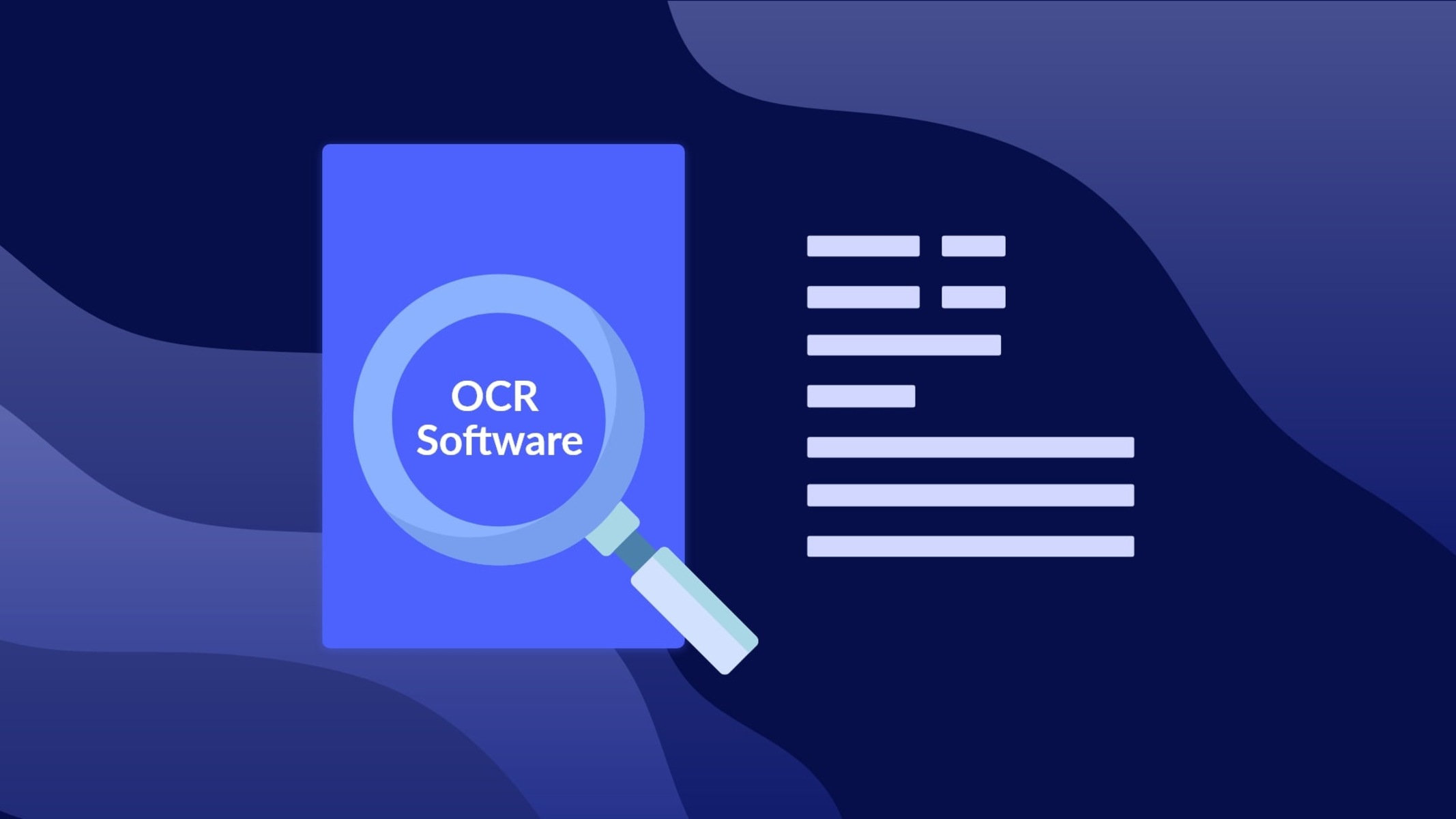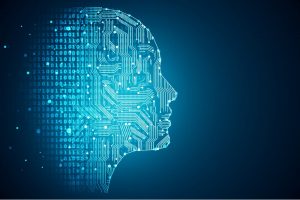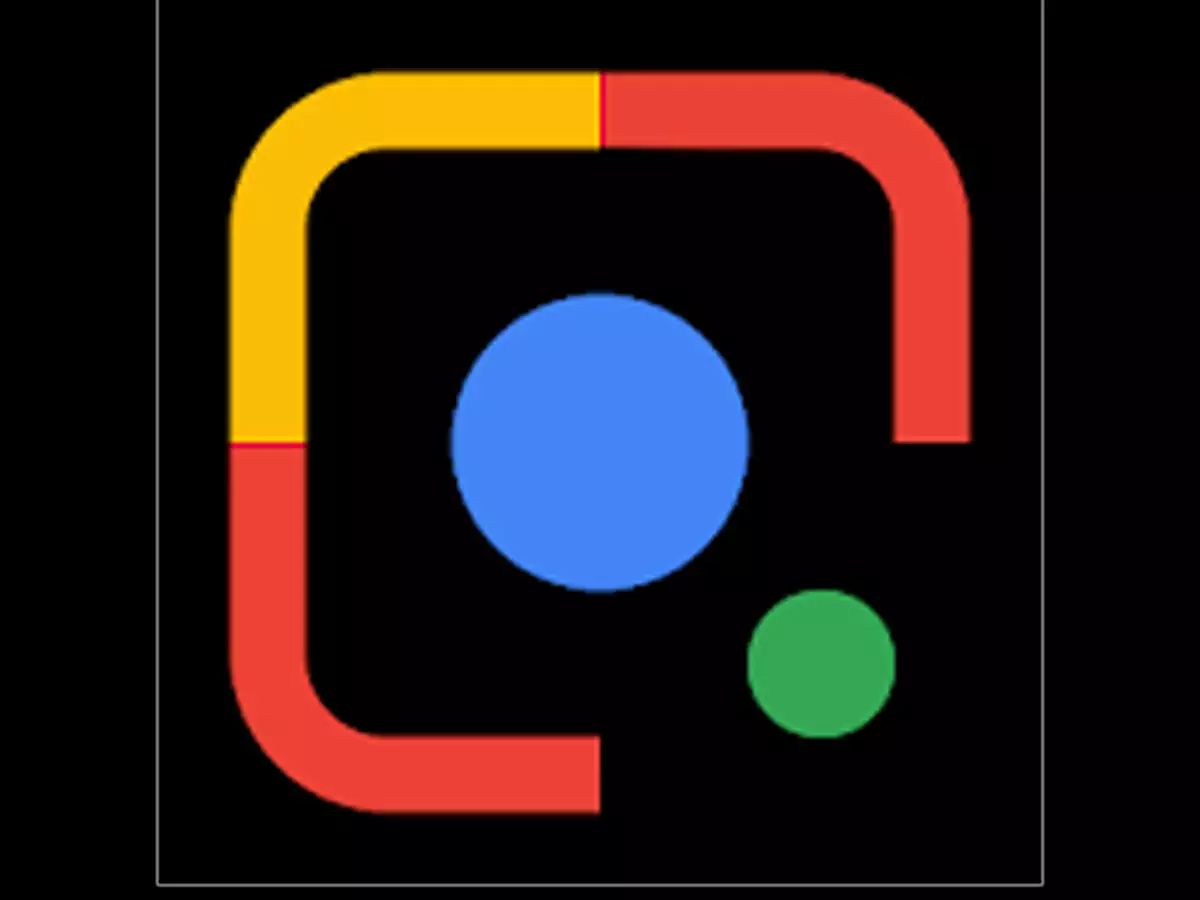Introduction
Welcome to the world of machine learning and Optical Character Recognition (OCR), a powerful combination that is revolutionizing the way we process and extract information from printed and handwritten documents. In today’s digital age where vast amounts of data are generated every second, OCR plays a crucial role in converting images of text into editable and searchable digital text. With the ability to analyze and understand text with incredible accuracy, OCR has become an essential tool across various industries and applications.
OCR, simply put, is a technology that enables computers to read and understand characters and words from documents, images, or scans. By utilizing machine learning algorithms, OCR systems are capable of recognizing and extracting text from a wide range of sources, including printed text, handwritten notes, and even text embedded in images or videos.
The process of OCR involves several steps, starting with image pre-processing to enhance image quality and remove any noise or distortion. This is followed by text localization, where the system identifies and separates the text from the rest of the image. Next, the system segments the text into individual characters or words, and finally, applies machine learning algorithms to recognize and interpret the text accurately.
The use of OCR in machine learning offers numerous benefits and advantages. Firstly, it significantly reduces manual data entry, saving time and improving overall efficiency. With OCR, large volumes of documents can be digitized and processed quickly, eliminating the need for tedious manual transcription. This has a profound impact on industries such as finance, healthcare, and legal services, where data entry accuracy and speed are crucial.
Furthermore, OCR provides the ability to search and retrieve information from vast document repositories efficiently. By converting physical documents into digital text, OCR enables advanced search capabilities, allowing users to locate specific information within seconds. This enhances productivity, promotes better decision-making, and facilitates data analysis and reporting.
The applications of OCR in machine learning are vast and diverse. In banking and finance, OCR is used to extract data from invoices, receipts, and financial statements, enabling automated data entry and reducing errors. In healthcare, OCR can process medical records, prescriptions, and lab reports, improving information accessibility and patient care. In the legal sector, OCR helps in document classification, contract analysis, and due diligence.
However, implementing OCR in machine learning is not without its challenges. One of the primary obstacles is the variability of input sources. Documents can vary in fonts, sizes, handwriting styles, and image quality, making it challenging to achieve high accuracy in text recognition. Additionally, language complexities, multi-language support, and text orientation detection also pose challenges that need to be addressed.
Various techniques and algorithms are employed in OCR systems to handle these challenges. These include image enhancement techniques, feature extraction methods, pattern recognition algorithms, and deep learning models. Training data plays a crucial role in the performance of OCR systems, with large, diverse, and accurately annotated datasets being essential for achieving high levels of accuracy.
When evaluating OCR systems, performance metrics such as character accuracy, word accuracy, and page layout accuracy are commonly used. These metrics provide insights into the overall performance and effectiveness of the OCR system and help in identifying areas for improvement.
While OCR in machine learning offers numerous benefits, it also has its limitations. Some of these limitations include the inability to recognize handwritten text accurately, processing errors in complex documents with tables or images, and difficulties in handling cursive or stylized fonts.
Looking ahead, the future of OCR technology holds exciting possibilities. Advancements in machine learning and computer vision are continuously improving OCR accuracy and expanding its capabilities. With the integration of AI, OCR systems are becoming smarter, capable of adapting to different document types and languages, and even understanding the context and semantics of text.
What is OCR?
OCR, or Optical Character Recognition, is a technology that allows computers to interpret and extract text from images, scans, or documents. By leveraging machine learning algorithms, OCR systems are capable of understanding and converting printed or handwritten text into editable digital formats.
OCR technology has come a long way since its inception. Initially, OCR systems were limited to recognizing printed text from typewritten documents. However, advancements in computer vision, image processing, and machine learning techniques have expanded the capabilities of OCR to encompass handwritten text, various languages, and even text embedded in complex images. This has made OCR a powerful tool for automating data entry, organizing digital content, and enabling efficient information retrieval.
The process of OCR involves several steps. Firstly, the input image or document is pre-processed to enhance its quality and remove any noise or distortion. This may include tasks such as image resizing, noise reduction, and contrast adjustment. Next, the OCR system segments the image into individual characters or words through a process called text localization. This step is essential for isolating and identifying the textual content within the image.
Once the text is localized, the OCR system applies machine learning algorithms to analyze and recognize each character or word. These algorithms utilize pattern recognition techniques to match the input against a pre-trained model. This model contains a vast amount of data on different characters, fonts, and languages, enabling the system to make accurate predictions about the text’s identity.
In recent years, deep learning models, such as convolutional neural networks (CNNs) and recurrent neural networks (RNNs), have shown remarkable performance in OCR tasks. These models can learn complex patterns and capture contextual information, leading to higher accuracy in text recognition. Moreover, the availability of large datasets annotated with ground-truth labels has played a critical role in training and fine-tuning these deep learning models.
The benefits of OCR are manifold. One of the primary advantages is the significant time and effort savings it offers in data entry tasks. By automating the extraction and transcription of text from physical documents or images, OCR eliminates the need for manual data entry, reducing human errors and increasing productivity. This is particularly beneficial in industries that deal with large volumes of paperwork, such as finance, healthcare, and logistics.
Moreover, OCR enables advanced search capabilities by converting documents into searchable digital formats. This enables users to quickly locate and retrieve specific information within a document repository, saving time and streamlining workflows. Additionally, OCR facilitates data analysis and reporting by converting unstructured text into a structured format that can be easily processed and analyzed by other software tools.
While OCR systems have made significant progress, there are still challenges that need to be addressed. One common challenge is the variability of input sources. Documents can come in different fonts, sizes, and formats, making it difficult to ensure high accuracy in text recognition. Similarly, handling handwritten text can present challenges due to its inherent variability and the lack of explicit rules.
In the next section, we will explore the inner workings of OCR in more detail and delve into the techniques and algorithms employed to overcome these challenges and improve the accuracy and performance of OCR systems.
How does OCR work?
OCR, or Optical Character Recognition, is a complex process that involves several steps to accurately interpret and extract text from images or documents. By combining computer vision, image processing, and machine learning algorithms, OCR systems can automate the conversion of printed or handwritten text into editable digital formats.
The process of OCR begins with image pre-processing. In this step, the input image or document is enhanced to improve the quality and clarity of the text. This may involve tasks such as resizing the image, adjusting the contrast, removing noise or smudges, and correcting perspective distortions. Image pre-processing plays a critical role in enhancing the OCR system’s accuracy by providing clean and well-defined text for analysis.
Once the image is pre-processed, the OCR system performs text localization. This step involves detecting and separating the text from the rest of the image. Various techniques, such as edge detection and contour analysis, are used to identify regions of the image that contain text. Through this process, the OCR system creates bounding boxes or outlines around individual characters or words, preparing them for further analysis.
After text localization, the OCR system moves on to the core recognition phase. In this step, the system applies machine learning algorithms to analyze and interpret the text within the localized regions. These algorithms can be traditional methods like template matching or statistical techniques, but more commonly, they include deep learning models such as convolutional neural networks (CNNs) and recurrent neural networks (RNNs).
Deep learning models have demonstrated remarkable performance in OCR tasks. CNNs excel at feature extraction from images, allowing them to detect and recognize patterns in the text. RNNs, on the other hand, are adept at capturing contextual information by modeling sequential dependencies, making them ideal for recognizing handwritten text.
Prior to the recognition phase, the OCR system is typically trained on a large dataset of labeled text samples. This dataset, known as the training data, helps the system learn patterns, characteristics of different fonts, and the structure of various languages. Training data plays a crucial role in fine-tuning the OCR system and improving its accuracy.
During the recognition phase, the OCR system analyzes each character or word within the localized regions using the trained model. The system compares the input against the learned patterns and makes predictions about the identity of the text. To improve accuracy, the system may utilize language models, dictionaries, or statistical algorithms that consider the context and likelihood of specific words occurring.
At the end of the recognition phase, the OCR system generates the recognized text as an output. It can further post-process the recognized text to correct errors or enhance its formatting. This may involve tasks like spell checking, text normalization, or applying rules for specific formatting conventions.
Overall, OCR is a powerful technology that enables computers to understand and extract text from images or documents. By combining machine learning algorithms with computer vision techniques, OCR systems have revolutionized data entry processes, improved searchability of documents, and enabled efficient information retrieval in various industries.
Benefits of using OCR in machine learning
The integration of Optical Character Recognition (OCR) into machine learning algorithms provides numerous benefits across a range of industries and applications. By leveraging OCR technology, businesses can streamline their processes, increase efficiency, and unlock the value of their unstructured data. Let’s explore the key advantages of using OCR in machine learning:
1. Automated data entry: OCR eliminates the need for manual data entry by extracting text from physical documents or images and converting it into editable and searchable digital content. This automation significantly reduces human errors, saves time, and improves data accuracy and efficiency in industries such as finance, healthcare, logistics, and more.
2. Increased productivity: By automating data entry and document processing, OCR frees up valuable time for employees to focus on more strategic and value-added tasks. This increased productivity has a direct impact on the overall efficiency and competitiveness of businesses.
3. Improved data accessibility: OCR enables the conversion of physical documents into searchable digital formats. This means that valuable information can be easily found and retrieved, saving time on manual searching through physical files and enabling quick access to critical data for decision-making purposes.
4. Enhanced accuracy: OCR systems, especially those powered by machine learning algorithms, continuously learn and improve from large datasets. This can lead to highly accurate text recognition, even when dealing with complex document formats, handwritten notes, or low-quality images. The reduction in errors associated with manual data entry can have a significant impact on data integrity and decision-making processes.
5. Cost savings: Automating data entry and document processing through OCR reduces the need for manual labor, resulting in cost savings for businesses. By leveraging OCR technology, organizations can optimize their resources, reduce overhead expenses, and improve overall operational efficiency.
6. Streamlined workflows: OCR facilitates seamless integration with existing systems and workflows. This allows for faster and more efficient document processing, reducing bottlenecks and improving the overall flow of information across departments or teams.
7. Advanced analytics and insights: OCR provides the foundation for extracting valuable insights from unstructured data. By converting unstructured documents into structured, machine-readable formats, organizations can leverage analytics tools to gain actionable insights, identify trends, and drive data-driven decision-making.
8. Compliance and security: OCR can play a critical role in ensuring compliance with regulatory requirements by providing accurate and reliable data for auditing and reporting purposes. Additionally, OCR can help enhance document security by digitizing and safeguarding sensitive information, reducing the risk of physical document mishandling or loss.
9. Scalability: OCR technology is highly scalable, allowing businesses to process large volumes of documents quickly and efficiently. Whether it’s processing thousands of invoices, extracting information from customer forms, or analyzing vast amounts of textual data, OCR can handle the demands of growing businesses with ease.
10. Competitive advantage: Organizations that leverage OCR in machine learning gain a competitive edge by improving efficiency, accelerating decision-making, and optimizing processes. By harnessing the power of OCR technology, businesses can differentiate themselves in the market and stay ahead of the competition.
The benefits of using OCR in machine learning extend far beyond saving time and reducing errors. When implemented effectively, OCR opens up new possibilities for process automation, data analysis, and strategic decision-making, providing a solid foundation for digital transformation in today’s fast-paced, data-driven world.
Applications of OCR in machine learning
Optical Character Recognition (OCR) technology, when integrated with machine learning algorithms, finds a wide range of applications across diverse industries. By automating data extraction, enhancing document searchability, and facilitating efficient information processing, OCR in machine learning has become indispensable in various domains. Let’s explore some of the key applications:
1. Document digitization and archival: OCR is extensively used for converting physical documents into digital formats. This enables efficient storage, retrieval, and sharing of documents across organizations. Industries such as banking, insurance, and legal services rely on OCR to streamline document management processes, reducing the need for physical storage and facilitating easy access to information.
2. Invoice and receipt processing: OCR plays a critical role in automating invoice and receipt processing, extracting key details such as invoice number, date, vendor information, and item descriptions. This reduces manual effort, minimizes errors, and expedites the billing and accounting processes.
3. Data extraction from forms: Many industries rely on forms for data collection, including healthcare, finance, and surveys. OCR enables automated extraction of data from filled forms, eliminating the need for manual data entry. This significantly streamlines data integration and analysis processes.
4. Data entry and transcription: OCR in machine learning greatly simplifies data entry tasks by transforming printed or handwritten text into editable digital content. This is particularly useful in industries that deal with large volumes of data, such as logistics, finance, and retail.
5. Text analysis for sentiment and sentiment analysis, brand monitoring, and social listening: With OCR, organizations can process large volumes of textual data from sources such as social media, customer reviews, and surveys. By extracting and analyzing text, businesses gain insights into customer sentiments, product feedback, and market trends, enabling them to make data-driven decisions.
6. Document classification and categorization: OCR helps in automatically categorizing and organizing documents based on their content or metadata. This is particularly beneficial in industries such as legal services, where large volumes of documents need to be classified based on their legal nature.
7. Text translation and localization: Machine learning-powered OCR systems facilitate the translation of text in different languages. By recognizing and extracting text from documents or images, OCR can automate the translation process, enabling businesses to communicate effectively in multilingual environments.
8. Accessibility and assistive technology: OCR makes content more accessible to individuals with visual impairments. By converting printed text into digital formats, OCR ensures that visually impaired individuals can access and consume information through text-to-speech or braille devices.
9. Identification and verification: OCR technology, combined with machine learning, contributes to identity verification processes. For example, it enables automatic extraction of information from identity documents like passports or driver’s licenses, enhancing the efficiency and accuracy of identity verification processes.
10. Handwriting recognition: OCR is also utilized for recognizing and converting handwritten text into digital formats. This is valuable for applications such as digitizing handwritten notes, analyzing historical documents, and facilitating automated form-filling processes.
These applications represent only a fraction of the diverse range of use cases where OCR in machine learning excels. From optimizing business processes to enhancing customer experiences, OCR technology continues to drive innovation and efficiency across multiple industries.
Challenges in OCR implementation
While Optical Character Recognition (OCR) technology offers numerous benefits, its implementation is not without challenges. Various factors can pose obstacles to achieving high accuracy and efficiency in OCR systems. Let’s explore some of the key challenges in OCR implementation:
1. Variability in input sources: OCR systems often encounter documents and images with different fonts, sizes, styles, and layouts. This variability can make it challenging to accurately recognize and extract text. The system must be robust enough to handle these variations and adapt to different input sources effectively.
2. Handwritten text recognition: Recognizing and accurately transcribing handwritten text is considerably more challenging than printed text recognition. Handwriting styles can vary greatly, and there may be inconsistencies or ambiguities that make it difficult for OCR systems to achieve high accuracy in recognizing handwritten characters and words.
3. Image quality and noise: Poor image quality, including low resolution, blurriness, or distortions, can significantly impact OCR accuracy. Images with noise, smudges, or uneven lighting can further complicate the text recognition process. Pre-processing steps, such as image enhancement and noise reduction, are necessary to mitigate these challenges.
4. Language complexities: OCR systems need to handle different languages, character sets, and writing systems. Languages with complex orthographies or unconventional character arrangements pose additional challenges. Moreover, OCR systems must handle multi-language documents and ensure accurate recognition for each language.
5. Text orientation detection: OCR systems often encounter documents with text in various orientations, such as rotated or skewed text. Detecting and correctly orienting the text is essential for accurate recognition. The system needs to handle different text orientations and adjust the recognition process accordingly.
6. Complex document structure: OCR faces challenges when dealing with complex document structures, such as tables, charts, or multiple columns. Extracting information from such structures accurately and preserving the original document’s formatting can be difficult and requires advanced techniques and algorithms.
7. Limited contextual understanding: OCR systems primarily focus on recognizing individual characters or words. However, understanding the context and semantics of the text can be crucial in achieving higher accuracy. Accounting for phrases, grammar rules, and contextual information can help improve the recognition process.
8. Training data availability and quality: OCR systems heavily rely on training data to learn and improve their recognition capabilities. Obtaining large, diverse, accurately annotated datasets can be challenging. The availability and quality of training data directly impact the OCR system’s performance and its ability to handle different scenarios and languages.
9. Dealing with special characters or symbols: OCR systems may struggle with accurately recognizing and interpreting special characters, symbols, or non-standard fonts. Developing techniques to handle these special cases and ensuring consistency in recognizing uncommon characters are important challenges in OCR implementation.
10. Error correction and post-processing: Despite advancements in OCR accuracy, errors can still occur during the recognition process. Post-processing techniques, such as spell-checking, dictionary validation, and rule-based correction, are necessary to enhance the accuracy and usability of OCR outputs.
Addressing these challenges requires a combination of advanced algorithms, robust training data, and continuous improvement. As OCR technology continues to evolve, advancements in computer vision, machine learning, and artificial intelligence will contribute to overcoming these challenges and further enhance the accuracy and efficiency of OCR systems.
Techniques and Algorithms Used in OCR
Optical Character Recognition (OCR) systems employ a variety of techniques and algorithms to accurately recognize and extract text from images or documents. These techniques and algorithms play a crucial role in improving the accuracy, robustness, and efficiency of OCR systems. Let’s explore some of the key techniques and algorithms used in OCR:
1. Image Pre-processing: Image pre-processing is an essential step in OCR. Techniques such as noise reduction, contrast enhancement, and image resizing are applied to improve the quality and clarity of the input image. Other pre-processing techniques include skew correction, where the image is adjusted to align the text horizontally, and binarization, which converts the image into a binary format for easy text segmentation.
2. Feature Extraction: Feature extraction techniques aim to capture relevant information and patterns from the input image. These features are then used by OCR algorithms for character or word recognition. Common techniques include edge detection, which identifies changes in pixel intensities along edges, and histogram-based methods that analyze pixel intensity distributions within the image regions.
3. Pattern Recognition Algorithms: Pattern recognition algorithms are at the core of OCR systems. Traditional algorithms such as Template Matching compare the input image with a template library to identify individual characters or words. Statistical algorithms, such as Hidden Markov Models (HMMs), utilize probability distributions to model and recognize sequences of characters. Machine learning algorithms, especially deep learning models, such as Convolutional Neural Networks (CNNs) and Recurrent Neural Networks (RNNs), have shown remarkable performance in OCR by automatically learning features and capturing contextual information.
4. Text Segmentation: Text segmentation techniques are used to separate individual characters or words from the input image. Various approaches, such as connected component analysis, contour detection, or region-based methods, are employed to identify and isolate text regions. These techniques help prepare the text for further processing and recognition.
5. Language Models: Language models, including dictionaries, grammars, or linguistic rules, are utilized to improve OCR accuracy by considering the context and likelihood of specific words or phrases occurring. These models help reduce errors and enhance the recognition of ambiguous or irregular text patterns.
6. Training Data: Training data, in the form of large datasets with labeled text samples, is crucial for machine learning-based OCR systems. The training data provides examples for the OCR system to learn and improve its recognition capabilities. This data is used to train deep learning models, fine-tune parameters, and enable the OCR system to generalize better and handle various fonts, languages, and writing styles.
7. Post-processing Techniques: Post-processing techniques aim to refine and correct OCR outputs. Spell-checking algorithms verify and correct recognized words based on dictionary comparison. Rule-based post-processing techniques can handle specific formats or patterns, ensuring adherence to formatting conventions. Machine learning-based approaches, such as error detection and correction models, further enhance OCR outputs by identifying and rectifying errors.
8. Combination of Techniques: Often, a combination of multiple techniques and algorithms is used in OCR systems to achieve higher accuracy and robustness. For example, a system may employ image pre-processing techniques, followed by deep learning-based character recognition algorithms, and finally, post-processing techniques for error correction.
Advancements in computer vision, machine learning, and artificial intelligence continue to enhance the effectiveness of OCR techniques and algorithms. As OCR technology evolves, the combination of these techniques, along with improvements in training data availability and computational capabilities, will further enhance the accuracy, speed, and adaptability of OCR systems in various applications.
Training Data and Evaluation Metrics
Training data and evaluation metrics play a crucial role in the development, training, and evaluation of Optical Character Recognition (OCR) systems. The availability of diverse and accurately labeled training data, along with appropriate evaluation metrics, is essential for achieving high accuracy and robustness. Let’s delve into the significance of training data and evaluation metrics in OCR:
Training Data: Training data forms the foundation of OCR systems. It consists of large datasets that contain labeled examples of text samples. The training data provides the OCR system with the necessary information to learn and recognize different characters, fonts, languages, and writing styles. The quality and diversity of this training data directly impact the performance and generalization abilities of the OCR system.
Training data should be representative of the real-world scenarios in which the OCR system will be deployed. It should include a broad range of fonts, sizes, writing styles, and document layouts to help the system handle various input sources accurately. The training data should also cover multiple languages and character sets to ensure language diversity and handle multilingual documents effectively.
Creating training data often involves manual annotation, where human experts label the characters or words in the dataset. This annotation step provides ground-truth labels that serve as a reference for training and evaluating the OCR system. Tools and algorithms can assist in speeding up the annotation process and ensuring accuracy.
Evaluation Metrics: Evaluation metrics are used to assess the performance and effectiveness of OCR systems. They provide quantitative measures of the system’s accuracy and help identify areas for improvement. Several evaluation metrics are commonly used in the context of OCR:
- Character Accuracy: This metric measures the percentage of correctly recognized characters compared to the total number of characters. It focuses on the accuracy of individual character recognition and is calculated as the ratio of correctly recognized characters to the total number of characters in the evaluated dataset.
- Word Accuracy: Word accuracy measures the percentage of correctly recognized words compared to the total number of words. It takes into account the context and sequence of characters, evaluating the system’s ability to recognize entire words correctly.
- Page Layout Accuracy: Page layout accuracy assesses the OCR system’s ability to preserve the original formatting and layout of the document. This metric evaluates how well the system handles elements such as tables, columns, images, and graphics.
- Confusion Matrix: The confusion matrix provides a detailed analysis of the recognition errors made by the OCR system. It shows the distribution of errors by comparing the ground-truth labels with the system’s recognized outputs. The confusion matrix helps identify specific character or word recognition problems, facilitating targeted improvements.
Evaluation metrics should be chosen based on the specific objectives and requirements of the OCR system. Aggregating the evaluation metrics across various test datasets, representing different document types and languages, provides a comprehensive understanding of the system’s overall performance.
It is important to note that evaluation metrics are not static and can be adapted based on specific application needs. There may be additional metrics or specialized evaluation protocols designed for specific OCR applications or challenges. Choosing appropriate evaluation metrics and defining evaluation protocols that align with the intended use of the OCR system is crucial for accurate and meaningful performance assessments.
By leveraging high-quality training data and using appropriate evaluation metrics, OCR systems can be trained and evaluated effectively. Continuous refinement and iteration, driven by accurate evaluation, are key to improving OCR system performance and ensuring their successful deployment in diverse applications.
Limitations of OCR in Machine Learning
While Optical Character Recognition (OCR) integrated with machine learning algorithms has made significant advancements, there are still limitations to consider. Understanding these limitations is crucial for appropriate implementation and managing expectations. Let’s explore the key limitations of OCR in machine learning:
1. Handwriting Recognition: While OCR has made progress in recognizing printed text, accurately recognizing and transcribing handwritten text remains challenging. Handwriting can vary significantly in style, size, and legibility, making it difficult to achieve high recognition accuracy. OCR systems may struggle with unusual or illegible handwriting, affecting their ability to accurately extract information from handwritten documents.
2. Complex Document Formats: OCR systems may face difficulties when dealing with complex document formats, such as documents with tables, diagrams, or multi-column layouts. Extracting information from these documents, preserving formatting, and maintaining the context within such structures can pose challenges for OCR accuracy and may require additional processing and post-analysis.
3. Low-Quality Inputs: OCR performance relies heavily on the input image quality. Low-quality scans, documents with faded or smudged text, or images captured under poor lighting conditions can hamper accuracy. Noise, distortions, or artifacts present in the input image can introduce errors in the OCR output and lower the overall performance of the system.
4. Variability in Fonts and Languages: OCR systems may struggle with unrecognized or unusual fonts, especially if they lack representation in the training data. Similarly, handling languages with complex scripts, scripts with ligatures, or non-Latin character sets can pose challenges. OCR accuracy may be compromised when dealing with languages that are underrepresented in the training data or have limited resources available for language-specific models.
5. Contextual Understanding: OCR systems primarily focus on recognizing individual characters or words and may not possess a deep understanding of the context. This limitation can result in errors when there are ambiguities or variations in meaning that arise from the lack of contextual information. For instance, OCR might struggle to distinguish between similar words with different meanings (“there” vs. “their”) based solely on image analysis.
6. Limited Out-of-Vocabulary Support: OCR systems are trained on specific datasets, and their performance is optimized for the characters and words in the training data. Handling out-of-vocabulary terms or symbols, such as specialized domain-specific terminology or rare characters, can be challenging. OCR systems may not accurately recognize or correctly interpret such out-of-vocabulary instances.
7. Sensitivity to Image Conditions: OCR systems can be sensitive to variations in image conditions, such as rotation, skew, or perspective distortion. Text orientation detection and image pre-processing techniques are necessary to handle these variations effectively. However, OCR performance can still be impacted if these conditions are severe or inconsistent within the document.
8. Processing Speed: OCR processing speed can vary depending on the complexity of the document, the size of the image, or computational resources. OCR systems may require sufficient processing time, especially for large-scale or real-time applications. Balancing accuracy and processing speed is a critical consideration when implementing OCR in time-sensitive environments.
While OCR in machine learning has made significant strides, these limitations highlight the challenges that still exist. Acknowledging these limitations and understanding their impact is essential for setting realistic expectations, identifying areas of improvement, and exploring complementary techniques or technologies to address specific OCR requirements.
Future Developments in OCR Technology
The field of Optical Character Recognition (OCR) technology continues to evolve rapidly, driven by advancements in machine learning, computer vision, and artificial intelligence. These advancements open up exciting possibilities for the future of OCR. Let’s explore some of the potential developments in OCR technology:
1. Deep Learning Advancements: Deep learning models, such as convolutional neural networks (CNNs) and recurrent neural networks (RNNs), have shown remarkable performance in OCR tasks. Future developments will likely focus on advancing these models further, improving their accuracy, efficiency, and ability to handle complex document formats, languages, and handwriting styles.
2. Improved Handwriting Recognition: Recognizing and transcribing handwritten text remains a challenge for OCR systems. However, advancements in machine learning techniques and the availability of larger, more diverse handwritten training datasets hold promise for improved handwriting recognition in the future. Innovations in neural network architectures and sequence models will likely contribute to enhanced accuracy and robustness in this area.
3. Contextual Understanding: Future OCR systems may aim to enhance their contextual understanding capabilities by considering semantic, grammatical, and syntactic information. By incorporating contextual knowledge, OCR systems will be better equipped to handle ambiguous words, correctly interpret meaning, and improve overall recognition accuracy.
4. Multilingual Support: With globalization and the increasing need for multilingual support, future OCR systems will likely expand their language coverage to encompass a broader range of scripts, character sets, and writing systems. This will enable organizations to process and extract information from documents in various languages, fostering greater accessibility and usability across diverse international markets.
5. Real-time OCR Processing: Improvements in computational power and algorithms will lead to faster, real-time OCR processing capabilities. This will enable OCR systems to handle high-speed document scanning, process data on the fly, and provide instantaneous results for time-sensitive applications. Real-time OCR processing will find applications in industries such as finance, logistics, and customer service, where quick data extraction and analysis are paramount.
6. Enhanced Document Structure Recognition: OCR systems will continue to advance in their ability to accurately recognize and interpret complex document structures, including tables, diagrams, and multi-column layouts. Future OCR technology will enable better preservation of original document formatting, ensuring fidelity to the original layout during the digitization process.
7. Intelligent Text Correction: OCR systems may incorporate advanced natural language processing techniques to intelligently correct errors in the recognized text. By leveraging language models, spell-checking algorithms, and grammar analysis, OCR systems can automatically correct misidentified characters or words, improving the accuracy of the final output.
8. Integration with Other Technologies: OCR will likely be integrated with other emerging technologies, such as augmented reality (AR) and natural language processing (NLP). This integration will enable real-time text recognition in AR applications and enhance the interaction between OCR systems and users through voice commands or natural language interfaces.
9. Greater Accessibility and Inclusivity: Future developments in OCR will focus on improving accessibility for individuals with visual impairments. OCR technology will continue to contribute to advancements in assistive technologies, enabling improved text-to-speech conversion, braille transcription, and other tools that make digital content more accessible to visually impaired individuals.
10. Customization and Adaptation: OCR systems may offer more customization options to cater to specific industry needs or specialized domains. The ability to train OCR models on domain-specific datasets will result in higher accuracy for specific types of documents or terminology.
The future of OCR technology holds tremendous potential for transforming document processing, data extraction, and information retrieval across various industries. As OCR continues to evolve, advancements in machine learning, computer vision, and AI will drive innovation, ultimately leading to more accurate, efficient, and flexible OCR solutions.
Conclusion
Optical Character Recognition (OCR) integrated with machine learning algorithms has become a transformative technology, revolutionizing the way we process and extract information from text. With the ability to automate data entry, enhance search capabilities, and optimize document management processes, OCR in machine learning offers numerous benefits across various industries and applications.
While OCR has made significant advancements, it is essential to recognize its limitations. Challenges such as handwriting recognition, variability in document formats, or low-quality inputs can impact accuracy and effectiveness. However, ongoing research and developments continuously tackle these challenges, aiming to improve OCR systems’ performance and robustness.
The future of OCR technology holds exciting potential. Advancements in deep learning models, contextual understanding, and multilingual support will contribute to enhanced recognition accuracy, speed, and adaptability. Real-time OCR processing will become more seamless, opening doors for rapid data extraction and analysis. Integration with other technologies, such as augmented reality and natural language processing, will further expand OCR’s capabilities and usability.
As OCR technology evolves, considerations such as the availability of diverse and accurately labeled training data and appropriate evaluation metrics become increasingly important. These elements provide the foundation for training and assessing OCR systems, ensuring their accuracy and effectiveness in real-world scenarios.
In conclusion, OCR in machine learning has transformed the way we handle text extraction and document processing. It offers automation, efficiency, and improved data accessibility, empowering businesses and individuals to streamline workflows and make informed decisions. Despite the challenges that persist, ongoing advancements in OCR technology raise the bar for accuracy, flexibility, and integration, promising a future where OCR plays an even more significant role in transforming how we interact with textual information.
























